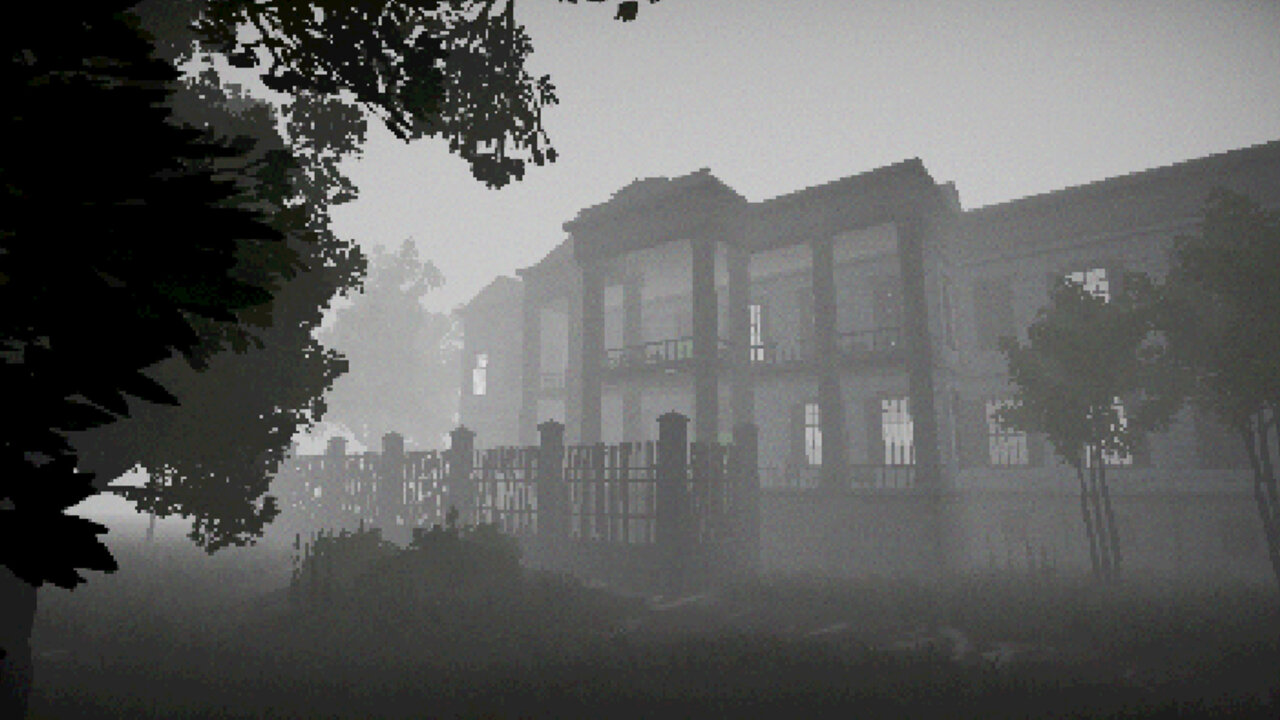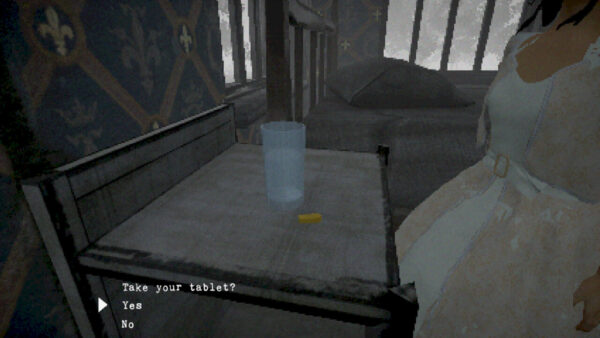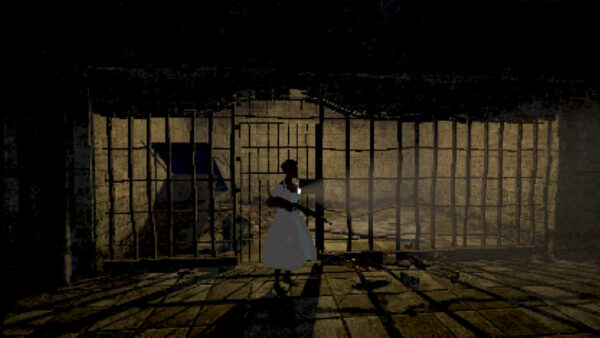Also On: PS4, Xbox Series X, Xbox One, Switch
Publisher: Puppet Combo
Developer: Puppet Combo
Medium: Digital
Players: 1
Online: No
ESRB: M
Puppet Combo proves it does not take hyper-realistic graphics to make you scream. An eerie atmosphere accompanied by a well-told story can set a mood that engrosses yet terrifies the player. Puppet Combo’s latest release for console platforms, The Glass Staircase, does both while delivering a heavy dose of nostalgia. Unfortunately, recreating the aesthetic of the older generation of games comes with its issues. Despite that, The Glass Staircase is worth the play and the sense of accomplishment it will leave you with.
The game starts in a large room full of beds and an announcement to take your pills. The player controls a young woman locked away with three others. The Glass Staircase begins shrouded in mystery, slowly unveiling its intentions as you interact and explore your surroundings; discovering the terrors that lurk within the walls of the labyrinth of a house. Various puzzles are scattered throughout, as well as letters that give the player background and allow them to progress. Most of the game is quiet exploration, yet the same calm parts will have the player questioning their sanity. There is an outdoor maze that changes once the objective is accomplished. Both times I played I remained lost longer than I am willing to admit.
The Glass Staircase is a slow-burn game, as evident in the lulled moments and seldom fierce jump scares; the fourth act of the game changes that. After exploring the house many times, the player finds themselves again in the beginning; now in control of the last remaining protagonist. Unlike the others, she does not take her pills and quickly finds a lockpick and a rifle. This is where things start to get interesting. Armed with the lockpick, the player can now open the outside door that leads to the laboratory area. More notes are found there as we learn all about cults and scientific experiments gone wrong. The WW1 timeline was fascinating and opened up an interesting discussion while streaming the game.
Not many video games spark an in-depth history lesson, allowing you to learn while concurrently entertained. Soon, the final girl finds her way into a trap, forcing her to battle one of her previous bunkmates. This fight was straightforward. Both times I played, I recklessly ran around and hectically fired until it was over. The aim mechanic was not ideal, but doable, leading us to the next fight. In the laboratory, we encounter the mammoth beast, the mutated scientist.
Alluding now to how incorporating older game design can either enhance a game or be detrimental. I first played this part a week before release. It took me 4 hours to progress. The fixed camera angles and poor aiming system could have been more intuitive and made gameplay frustrating. I tried with and without auto-aim and didn’t see much of a difference. I also tried tweaking the sensitivity of the controls with no improvement. The only way I overcame the beast was to go into a corner and blindly fire when I believed the monster was close, as the camera angle did not allow me to see him. This part was followed by another challenging area that led me in circles due to not being able to see one of the hallways because of the default filter. Finally, the creature from the first boss battle returned and was even faster and more arduous to outrun. I made the mistake of running downstairs, thinking I only had to escape the house. I ran into an area that was glitched, my character disappeared, and I was unable to find my way back into the game. The monster killed me, forcing me to restart from the checkpoint. Much to my chagrin, it was immediately after the first boss battle. At this point, I put down the game and took a break from it. The nostalgia aspect of the game reminded me of the worst parts of Rule of Rose.
When release day finally came, I decided to stream The Glass Staircase. There was an update, and I noticed a change right from the beginning. The glitched area that had gotten me killed was fixed! Kudos to one of the developers who responded to my email about the problem. I am unaware of what else was updated, but the game felt much more effortless to control and navigate. I still got lost in the outside maze and still got jumpscared even though I knew it was coming, but all without the frustrating janky controls. I even got past the first boss fight the first time! I did not plan on being able to finish the game, as I figured I would be stuck on the final encounter, but much to my surprise, I noticed a pattern in how he ran and defeated him on my first try! I am not exaggerating when I say I was so ecstatic that I almost cried! I have not felt this level of accomplishment since the Paul Serene boss fight from Quantum Break (if you know, you know).
Also, I would suggest that the main title screen reverse the New Game and Continue options. On more than one occasion, I almost chose the new game option, which would have deleted all progress.
Overall, I enjoyed Puppet Combo’s latest horror installment. It started slowly, then escalated to full nonstop combat. The characters were intriguing, as was the backstory that drove the narrative forward. I enjoyed learning about the downfall of Dr. Edward Sullivan through all the pages obtained in the house, as it gave it a very Alan Wake vibe. My only issue with the game was the aiming mechanism. In ’90s games, when they often utilized fixed camera angles, the auto-aim would automatically lock on. Unlike in this instance, it aimed straight ahead and then had to be manually maneuvered to where I wanted to shoot. If ’90s aesthetics are the goal, then I believe that only one aspect of retro gaming gameplay should be implemented to not overwhelm the player with all the non-intuitive controls that annoyed us when we played these games when we were younger.
Note: Puppet Combo provided us with a The Glass Staircase PS5 code for review purposes.




